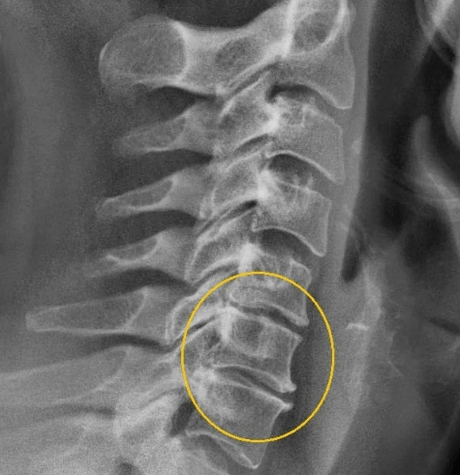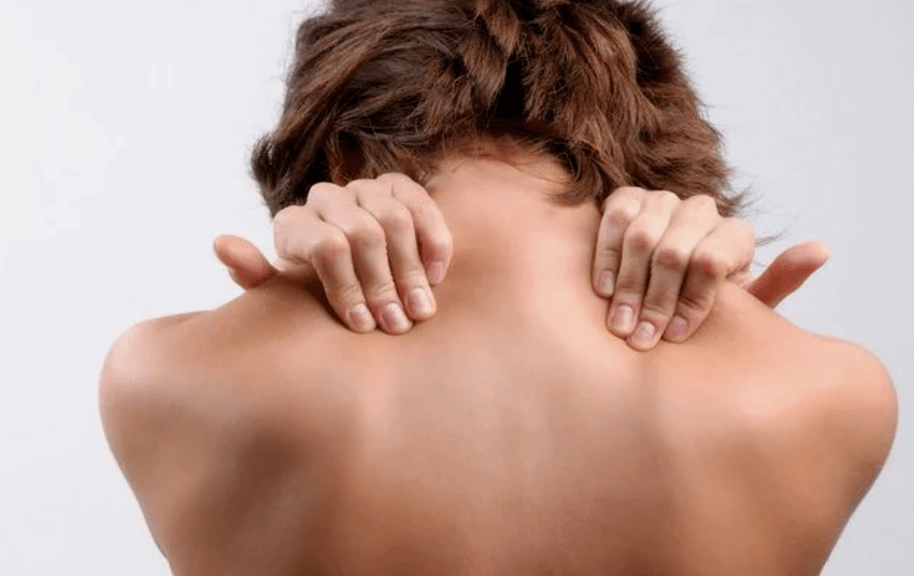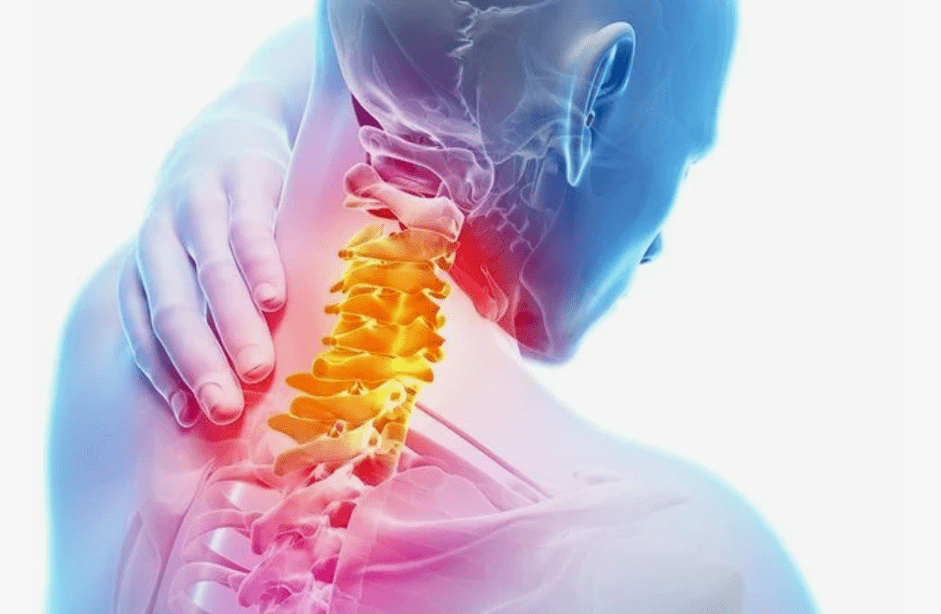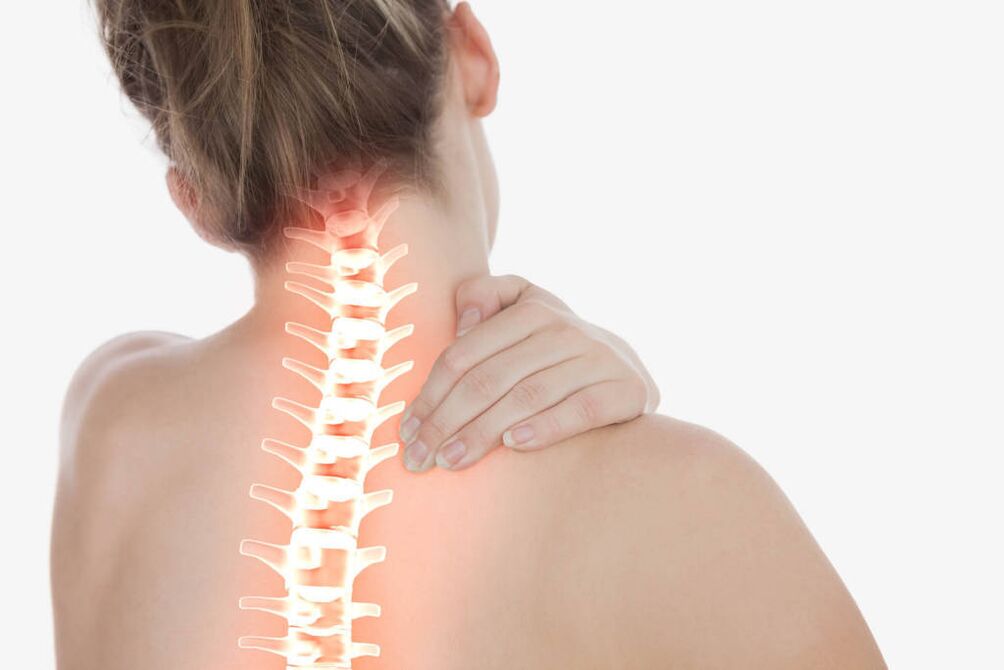Osteochondrosis is a common spinal pathology, characterized by a dystrophic change in the structure of the cartilage discs of the vertebrae and their bone base. On one scale or another, osteochondrosis manifests itself in most people after 30 years. Symptoms of cervical osteochondrosis are varied, which often complicate diagnosis and subsequent treatment.

General symptoms and signs of cervical osteochondrosis
This process affects any of the spine or some immediately. The lumbar and cervical vertebrae are more affected by pathologies, as the most sensitive to loads due to the anatomy of the human skeleton. The consequences of spinal osteochondrosis in the cervical region cause more annoyance and possible complications because the neck is a rich area of neuromusive highways, many of which feed the brain directly.
For this reason, clinical symptoms with cervical osteochondrosis are very much associated with ischemia of the brain areas. In addition, the nerve roots, which provide the sensitivity and motor activity of the hands and shoulder band, when squeezing with destroyed vertebrates can give a variety of symptomatic photography.
Signs of neck osteochondrosis depend on which of the body systems is affected by the pathology:
Below, consider the overall osteochondrosis clinic of the cervical spine.
Pain in the back of the area of the head, neck and collar
This is the most common symptom. Localization of the pain can be enlarged, affecting the shoulders, clavicle, chest, passing into intense head migraines. The nature of the pain depends on the localization of the lesion and the severity of the pathology. At first, the pain can be quickly transient, becoming gradually chronic, painful. In times of irritation, the pain becomes the shooting, with an increased tone of the neck muscles and limited head movement.
Often, pain with cervical osteochondrosis can be located after the sternum, in this case many patients take this symptom for angina pectoris. Differentiation can be performed by taking a nitroglycerin pill - pain due to osteochondrosis, they are not removed.
Noise, ringing, sensation of blockages in the ears
These symptoms often join a hearing a decrease. These phenomena are associated with a decrease in blood flow from vertebral arteries to vestibular. The complex of these symptoms is called cochlear, or snail syndrome, and it is not always possible to determine its association with osteochondrosis in the cervical region. One specific feature for differentiation is that noise, blockage and ears are felt when changing position, after a long stay in one position.
Dizziness
Dizziness is also due to a violation of blood flow to the inner ear organs, which ensures body balance. Nystagm often joins dizziness - arbitrary fluctuations in the students' eye on the sides.
Noise
This sensation appears due to the irritation of the edges of the diaphragmatic nerve. It is an ingredient of the cervical nerve beam and is involved in the regulation of breathing, depth and frequency. Patients complain about the inability to breathe in the full chest. In some cases, the symptoms exacerbated in severe shortness of breath and drowning. For the same reason, breathing stops at night and snoring. The disadvantage of oxygen due to respiratory problems is ultimately the cause of increased fatigue, a decrease in concentration and memory problems.

Nausea
It is accompanied by air that waist. Also due to problems with blood circulation in some areas of the brain and inner ear. Nausea is sometimes observed with unbearable vomiting, which is caused by head and body movements. The consequence of nausea and frequent vomiting is a decrease in appetite, weight loss, nutritious failure.
Problems with vision
"Flies" in the eye, a decrease in visual acuity, fog before the eyes - these are all symptoms due to the ischemia of the brain area that is responsible for vision. Patients with osteochondrosis complain less frequently, as the lack of blood supply from the vertebral vessels is offset by the blood flow from the carbon artery system. Glasses and therapeutic gymnastics for the eye muscles do not solve the problem, usually vision improves after treatment of osteochondrosis.
What are the most important symptoms of osteochondrosis are briefly shown in this video:
Blood pressure board
An unstable level of pressure is due to the damaged blood flow to the prolonged brain that is responsible for the functions of the vascular-motor center.
Unexpected states, or syncopal states
Occurs with spasm of the brain arteries due to short -term stop of blood flow along the vertebral arteries. From the state of losing the patient's consciousness, you can quickly remove by laying it so that the legs are slightly higher than the head - the blood flow to the brain allows a person to lead to life. After a weak attack, the reversible problems with speech and movements, due to a short stoppage of blood flow, can be observed for some time.
Green symptoms
It can often be the only sign indicating osteochondrosis of the cervix. They are expressed as a sweating, dryness and feeling of a lump in the throat, difficulty swallowing. Symptoms are associated with compression of the nerve plexus responsible for the intrigue of the pharynx. It is necessary to distinguish such manifestations from a similar clinic for inflammation or neoplasms.
Increasing body temperature
Increased body temperature for cervical osteochondrosis is not the most typical symptom, rarely and locally observed: in the cervical area and collar, with a slight rash.
The clinic of osteochondrosis in the cervical spine can be, first, with varying degrees of severity, it depends on the stage of development of pathology, also during periods of irritation they are brighter, and secondly, to form in certain syndromes.

Symptoms depending on the phase of osteochondrosis of the cervical
Stage of
Starting degenerative processes in the vertebral disc cartilage. Symptoms are weak, sometimes they may not be noticed at all. The first signs of cervical back osteochondrosis:
Important: These symptoms become more pronounced when bending your head.
As a rule, in the first stage of osteochondrosis of the cervical region, patients do not go to the doctor, believing that all symptoms are associated with fatigue, stress, age, lack of sleep.
Stage II
At this stage, the extension of the vertebrates, the narrow intervertebral cracks, the fibrosis of the fibrous disk ring of the collagen is destroyed. There are visible painful symptoms of a point nature due to the compression of nerve drawers, intensifying during neck movements and curves of the head. Here you can already suspect the cervical osteochondrosis, whose symptoms in the second phase are as follows:
Long holding the head in a position leads to severe pain. At this stage of developing the disease, patients are already coming to the doctor for help.
Stage III
The fibrous rings on the disk are destroyed, hernia is formed. In the third stage, there is a deformity of the spine, displacement and vertebrae displacements due to their weak fixation. Symptoms are as follows:
This is a severe stage of the disease in which the patient is no longer able to support his head himself. Spinal cord ischemia and compression of the spine arteries lead to a complete inability to move and reduce forces in the muscles in other parts of the body, as well as to damage the spinal cord.

How to treat cervical osteochondrosis
The prescribed condition of the spine is a very severe pathology, which, with negligence, leads to disability, and as a result of deep disorders of cerebral circulation - and death. For this reason, with self -medication in case of such symptoms, you should not do. Osteochondrosis is treated in a hospital and at home exclusively as a doctor's prescription. In the initial stages, the treatment of cervical osteochondrosis is conservative, including medication recipes: non -steroidal anti -inflammatory drugs, anesthetics, hormonal medicines, complex vitamins, common medication -all of which relieve inflammation, pain, improves of soft tissue and vertez.
In the acute period, the drug is prescribed in the form of injections, as the pain descends, the patient goes into tablets. Physiotherapy, massage, exercise exercises usually defined at the remission phase, join the drug courses. In difficult cases, osteochondrosis is treated with surgery.






























